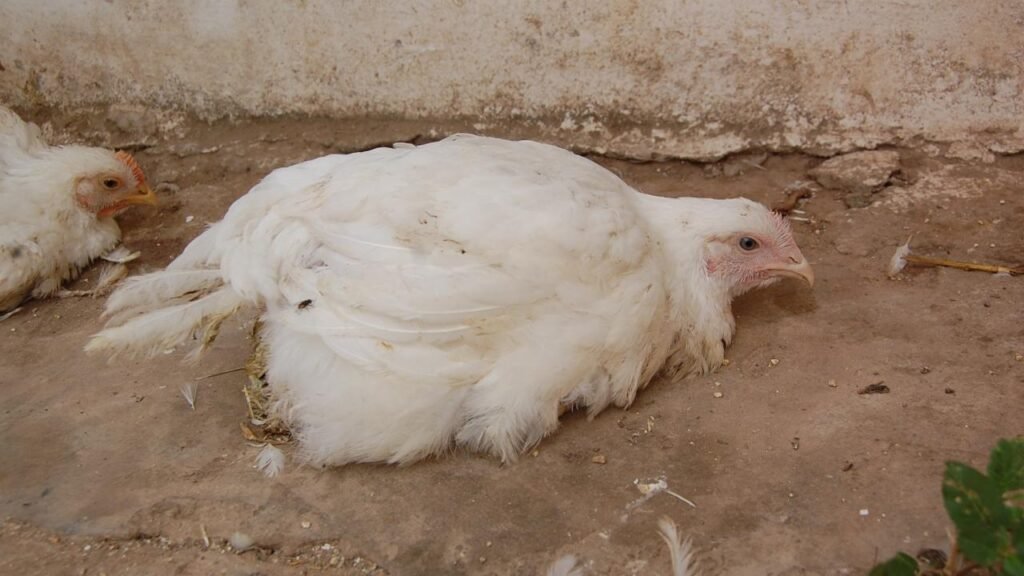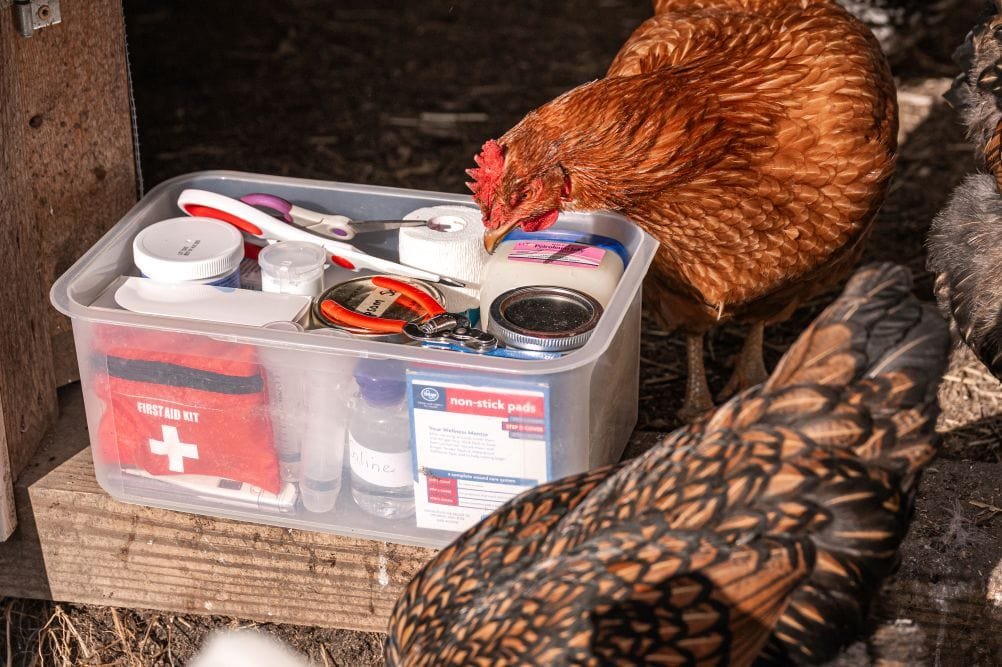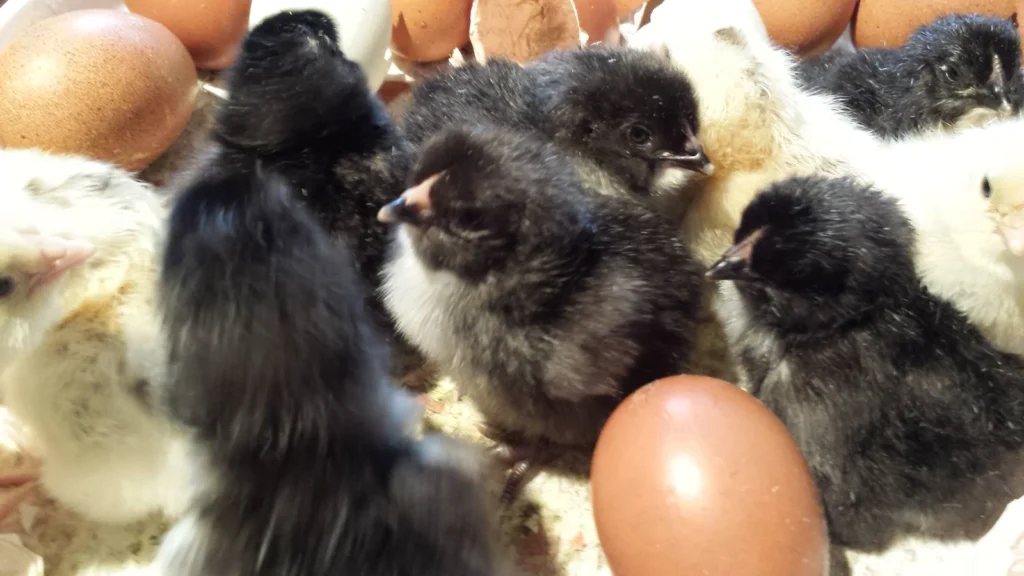I’ll never forget the first time I walked into my coop and saw watery, messy droppings everywhere. My heart sank. I immediately thought the worst—a plague was sweeping through my flock. After over 10 years of dealing with everything from a simple tummy ache to more serious issues, I’ve learned that panicking doesn’t help. My goal here is to get you the answers I wish I had on that day, so you can help your bird and find peace of mind.
This guide shares everything I’ve learned firsthand about diarrhea in chickens, from the common culprits to the critical signs that mean it’s time to call a vet.
Medical Disclaimer: I’m an experienced chicken keeper, not a veterinarian. The advice here is for informational purposes only and is not a substitute for professional diagnosis or treatment. Always consult a professional for a serious health diagnosis.
Is It Really Diarrhea? A Quick Guide to Droppings
The most important insight I’ve ever learned is to first confirm if you’re actually dealing with diarrhea. Most of the time, what looks like a problem is just a normal variation in chicken poop.
I’ve learned to look for three distinct parts in a healthy chicken dropping: a firm, brownish-gray feces, a white cap of urates (a solid form of pee), and a little clear urine. I also know now that “cecal poop” happens every 8-10 droppings—it’s dark, pasty, and often smelly. The first time I saw one, I was sure it was a sign of a major illness and spent hours watching the bird, only to realize later it was completely normal.
True diarrhea is a completely unformed, watery feces. It’s different from polyuria, which is an excess of urine but with normal, formed poop. If you see a pile of watery liquid but the dark part still has its shape, it’s polyuria. I’ve found this often happens on hot days when they’re drinking a lot of water, and providing fresh, cool water immediately is the first step I take.
Common Causes of Chicken Diarrhea
When you notice a problem, your first step is to be a detective. Diarrhea is a symptom, not a disease, so you need to find the underlying cause of your flock’s tummy troubles. Here are the most common culprits and what I’ve learned to check for.
Dietary Issues
I’ve learned to walk through my coop and ask myself: “Have I made a sudden feed change? Have my hens been getting too many high-moisture treats lately? Is there any sign of mold in their feed?” I once tried a new organic feed that was supposed to be great, but it gave my hens loose droppings for a week. I had to switch them back to their old feed slowly, mixing it in over a few days. This is a common aspect of chicken diarrhea issues that can be resolved quickly.
A crucial tip I’ve learned is to ensure your flock always has access to a dedicated dish of fresh grit, which acts like a chicken’s teeth to help them grind down their food for proper digestion.
Environmental Stress
I’ve found the most common cause of watery droppings is heat stress. Chickens will drink more water to stay cool, which leads to polyuria. I now check my coop’s temperature on hot days. If it feels hot, I immediately add frozen water bottles to their waterer, which keeps the water cool and encourages them to drink. I also learned the hard way about dirty water. A few years ago, I got a little lax with cleaning the waterer, and several hens started having runny poops. It was a clear sign that a dirty water source was the problem.
Parasites & Infections
Parasites like coccidiosis and worms can irritate the intestines. The first time I saw bloody stool in a chick, my heart dropped. It was a classic sign of coccidiosis, and I learned then that this microscopic parasite is a real threat that needs immediate veterinary attention. With worms, I’ve sometimes seen them in the droppings, but often the only sign is diarrhea and weight loss despite eating. Bacterial and viral infections (like Salmonella) are more serious and will often present with other symptoms like lethargy.
One of the most common parasites, Eimeria tenella, is recognized as a major cause of digestive disorders and hemorrhagic diarrhea in chickens. [^1] A serious bacterial infection, colibacillosis, which is caused by E. coli, is considered a predominant pathogen responsible for diarrhea in chickens and ducks. [^2]
Prevention is Your Best Defense
An ounce of prevention is worth a pound of cure, especially with a flock. Here are the things I do regularly to avoid chicken diarrhea in the first place:
- Daily: Check and replenish their waterer with fresh, clean water. I also do a quick visual check of the coop and the hens’ activity levels.
- Weekly: Give their feeders and waterers a thorough scrub with a brush and a solution of vinegar and water. This prevents a buildup of algae and bacteria.
- Monthly: I check my hens for signs of parasites like mites or worms. I also refresh their grit supply.
- General Dietary Rules: I’ve learned to introduce any new feed slowly over a week to prevent digestive upset. I also limit high-moisture foods like cucumbers and watermelon to small, occasional treats.
Immediate First-Aid: Your 24-Hour Checklist
The moment you spot a problem, these are the immediate, actionable steps I’ve learned to take.
- Isolate the Sick Bird: This is a non-negotiable first step. I immediately separate the chicken into a small, clean space. This prevents the potential spread of disease and has saved my flock from potential widespread illness on more than one occasion. Isolating the bird also allows me to watch its eating, drinking, and droppings without interference, giving me a much clearer picture of what’s going on.
- Provide Cleanliness & Comfort: I make sure the isolation area is clean, dry, and has fresh bedding. A dirty environment can worsen the problem.
- Focus on Hydration: Diarrhea causes dehydration, so this is my number one priority. I offer fresh, cool water with added electrolytes. You don’t need to buy a special product—a simple DIY recipe I’ve used with success is a tablespoon of sugar and a half-teaspoon of salt dissolved in a quart of water. I used this for a hen on a particularly hot day who was panting and had loose droppings. Before the electrolytes, she was lethargic and her droppings began to firm up. After a day of electrolyte water, she was more alert and her droppings began to firm up.
- Simplify the Diet: For the first 24 hours, I remove all treats and only offer a simple, bland diet. Plain, high-quality chicken feed is a great option. I also use a small amount of cooked rice or scrambled eggs. The goal is to give the digestive system a break and allow it to reset.
How to Stop Chicken Diarrhea Naturally (For Mild Cases)
Important Caveat: I’ve learned that these home remedies are for mild, non-critical cases and are meant to support gut health, not cure a serious illness. They can, however, be very effective in managing flock tummy troubles.
- Support Gut Health with Probiotics and Prebiotics: The best way to help a struggling gut is to restore its good bacteria. I used to think probiotics were just for people, but after a vet recommended them, I started adding a tablespoon of plain, unsweetened yogurt to their feed or offering a small amount of fermented feed. I once had a hen with mild, recurring loose droppings after a course of antibiotics. I started giving her a spoonful of plain yogurt mixed with her feed daily. Before, her droppings were consistently mushy. After about three days of the yogurt, her droppings were back to a normal, healthy consistency. You can also offer minced garlic (a prebiotic) to help feed that good bacteria.
- Use Apple Cider Vinegar (ACV): I’ve heard people swear by ACV, but I’ve found it’s not a magic cure. It’s great for balancing the pH of a chicken’s gut, which can aid in digestion. I use it as a regular preventative measure, adding 1 tablespoon of ACV per gallon of water to their waterer.
- Try Absorbent Foods: For a chicken with very watery droppings, a small amount of cooked rice or oatmeal can help absorb excess moisture in the digestive tract. I’ve found that offering a small amount of cooked rice or oatmeal mixed with their feed helps to firm things up quickly.
Post-Recovery: Reintroducing Your Chicken to the Flock
The first two days after your chicken seems to be back to normal are crucial. Here’s my process for ensuring a smooth, safe return:
- Observe for 48 Hours: Even if the droppings have firmed up, I keep the chicken isolated for an additional 48 hours to ensure there are no relapses and that it is eating and drinking normally.
- Gradual Reintroduction: I place the isolated chicken’s cage or pen inside the main coop for a few hours a day. This allows the flock to get used to seeing and smelling the chicken again without direct contact.
- Supervised Release: After a few days of this, I allow the chicken to rejoin the flock, but I supervise them for the first few hours. This is to ensure there is no bullying or pecking, which can happen with a chicken that has been away.
When to Call a Vet: Critical Red Flags
I’ve learned to stop second-guessing myself when I see these signs. These are the non-negotiables that tell me it’s time to get a professional involved with a serious case of diarrhea in chickens.
- Bloody stool. This is an immediate red flag, as it can be a sign of coccidiosis or other severe intestinal damage that requires veterinary intervention.
- Lethargy, a hunched posture, or ruffled feathers. A chicken showing these signs is trying to conserve energy because it is seriously ill.
- The bird stops eating or drinking completely. This is a life-threatening situation and can lead to rapid dehydration and death.
- Multiple birds in the flock are sick. This indicates a contagious disease that could quickly wipe out your flock.
- Diarrhea lasts for more than 48 hours with no improvement. At this point, the underlying cause is likely not a simple dietary issue and requires professional intervention.
Can I give my chicken tetracycline?
Tetracycline is an antibiotic and should only be used after a proper diagnosis from a vet. I’ve learned that in the United States, you need a prescription for antibiotics under the Veterinary Feed Directive (VFD). It’s critical to understand that improper use of antibiotics can be more harmful than helpful, as it can lead to antibiotic resistance. [^3] Improper use also means you cannot consume the eggs or meat from the chicken for a set period after treatment.
Answering Your Questions (FAQ)
What to do if my bird’s poop is watery?
First, check for other symptoms like lethargy or a lack of appetite. If the bird seems fine otherwise, it’s likely polyuria. I’ve found this is often caused by heat stress or recent high-moisture treats. I provide fresh water with electrolytes and see if the situation improves.
What is a stool softener for birds?
A stool softener is for constipation, which is the opposite of diarrhea. If your bird is struggling to poop, I’ve found that offering foods with high moisture content like watermelon, cucumbers, or a handful of fresh greens can help things along.
What is the best treatment for diarrhea?
There is no single best treatment for chicken diarrhea, as it depends on the cause. For chickens, I always start with supportive care: hydration, cleanliness, and a bland diet. If symptoms are severe or don’t improve, it’s time to call a vet.
How to stop diarrhea after eating chicken?
This is a human health question, not a chicken health question. If you get diarrhea after eating chicken, it’s often food poisoning. Your priority is to stay hydrated and stick to a bland diet (like the BRAT diet: Bananas, Rice, Applesauce, Toast) until your symptoms subside.
Conclusion & Final Thoughts
At the end of the day, observation is your best tool as a chicken keeper. By paying close attention to your flock, you’ll be able to spot problems early and decide whether it’s a simple dietary fix or a more serious case of flock tummy troubles. Don’t be afraid to trust your gut—if something feels wrong, it’s always best to call a vet.
Keeping a healthy flock is a rewarding journey, and you’re well-equipped to handle the bumps along the road.
Sources
[^1]: Chen, Y., Guo, S., Wang, Y. et al. (2025). Evaluation of the immunoprotective potential of recombinant EtMIF as a subunit vaccine candidate against Eimeria tenella infection in chickens. Frontiers in Immunology, 16. https://www.frontiersin.org/journals/immunology/articles/10.3389/fimmu.2025.1623743/full
[^2]: Quyen, D. V., Viet, H. Q., Truong, P. X., & Ngan, T. T. T. (2023). Isolation and characterization of Escherichia coli associated with diarrhea in chickens and ducks in Hai Phong province. Vietnam Journal of Biology, 45(2). https://vjs.ac.vn/vjbio/article/download/20228/2543255705/2543274963
[^3]: Kong, H. Q., Yan, H. Q., Sun, M. Y., et al. (2024). The effects of Fraxini cortex and Andrographis herba on Escherichia coli-induced diarrhea in chicken. Frontiers in Veterinary Science. https://www.ncbi.nlm.nih.gov/pmc/articles/PMC11810841/


